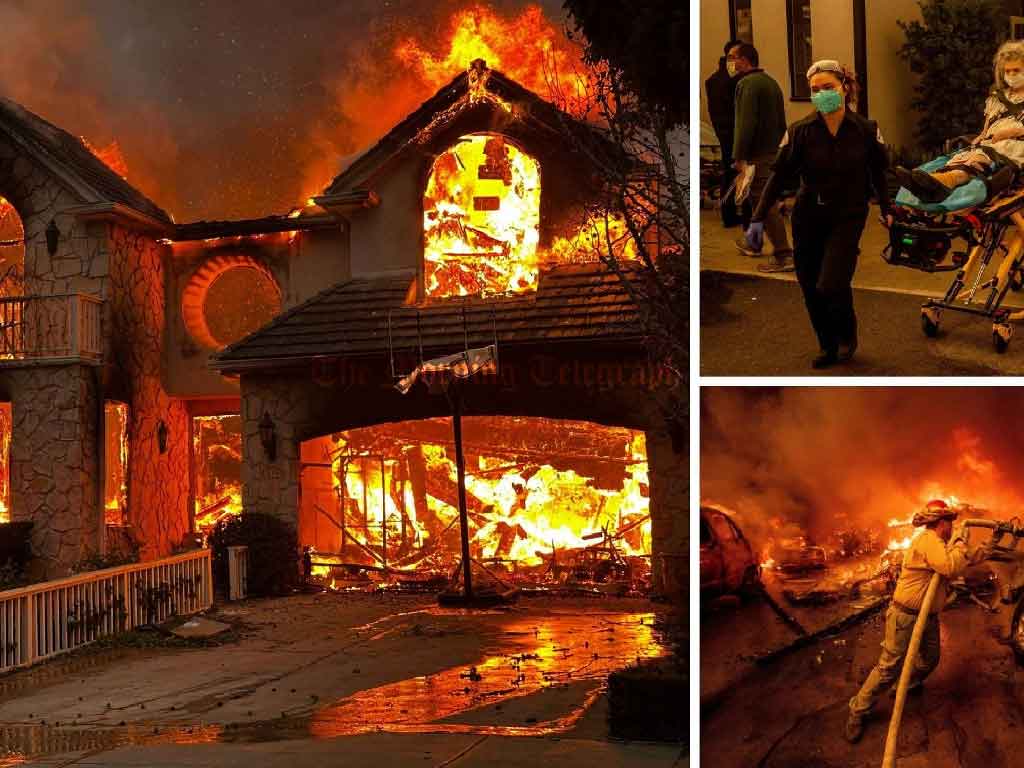
The wildfires raging across Los Angeles County have now claimed the lives of at least 24 people, with authorities warning that the situation could deteriorate further as high Santa Ana winds are expected to intensify this week. Governor Gavin Newsom has described the fires as the worst natural disaster in U.S. history in terms of scope and impact. Over 40,000 acres have been scorched, including more than 23,000 acres along the Pacific Palisades and the Pacific Coast Highway. The Palisades fire remains only 11 percent contained, while the Eaton fire, which has engulfed over 14,000 acres in Altadena and Pasadena, is 27 percent contained.
The National Weather Service has forecasted wind gusts of 30 to 50 mph in coastal regions and up to 70 mph in the mountainous areas of Los Angeles and Ventura counties. These strong winds, combined with dry vegetation and low humidity, are expected to exacerbate the fires, further threatening residential areas, iconic landmarks, and wildlife habitats.
The financial impact of these fires is projected to be among the most devastating in U.S. history. AccuWeather has revised its estimated damage and economic loss to between $250 billion and $275 billion, up from initial projections of $135 billion to $150 billion. The increase is attributed to the destruction of homes, extensive smoke damage, and long-term health effects from the toxic wildfire smoke. The fires have destroyed over 12,000 homes and displaced more than 150,000 residents, many of whom are struggling to find temporary shelter as rental prices surge in affected areas.
Reports have surfaced of landlords taking advantage of displaced families by illegally raising rental prices. These exploitative practices have drawn widespread condemnation, adding another layer of hardship for victims of the fires.
The fires have also threatened cultural and historical landmarks. The Getty Center and Getty Villa, which house priceless art collections and educational facilities, have been placed under evacuation orders. While the Getty Center remains stable, its staff has implemented extensive safety measures, including deploying one million gallons of water on-site to protect the structures. Officials have expressed concerns about potential wind-driven embers reaching the museum’s grounds, but as of now, the collections remain secure.
The humanitarian toll continues to rise, with 16 people reported missing in the fire zones. Los Angeles County Sheriff Robert Luna reported that 12 individuals are missing in connection with the Eaton fire and four in the Palisades fire. Efforts to locate these individuals are ongoing, with investigators working to determine whether any of the missing are among the deceased. No children have been reported missing at this time.
Governor Newsom has responded by deploying an additional 1,000 National Guard troops to assist with firefighting efforts and relief operations, bringing the total number of deployed personnel to 2,500. These troops are working alongside thousands of firefighters and emergency responders, who are racing against time to control the blazes before the winds return.
Evacuation orders remain in place and are expected to last until at least Thursday due to the dangerous fire conditions. Red flag warnings have been issued across much of Southern California, and officials have urged residents in evacuation zones to remain vigilant and prepared for rapid changes in fire behavior.
The ongoing wildfires have disrupted daily life and major events in Los Angeles. Actress Ashley Tisdale shared her personal struggles with mental health during the crisis, highlighting the emotional toll of the disaster. Meghan Markle’s Netflix series With Love, Meghan has also been delayed due to the fires, underscoring the wide-reaching impact of the crisis.
In addition to the immediate destruction, the long-term consequences of the wildfires are expected to be severe. Experts warn of potential health issues from prolonged exposure to wildfire smoke, which can cause respiratory problems, heart conditions, and other chronic illnesses. Environmental damage, including the loss of wildlife habitats and vegetation, is also a significant concern.
The Los Angeles wildfires are a stark reminder of the challenges posed by climate change, urban sprawl, and inadequate disaster preparedness. As officials work tirelessly to contain the flames and protect lives, the focus is also shifting toward long-term solutions, including better forest management, stricter building codes, and improved emergency response systems. For now, however, the immediate priority remains saving lives and preventing further destruction in what is already one of the most devastating wildfire seasons in U.S. history.




